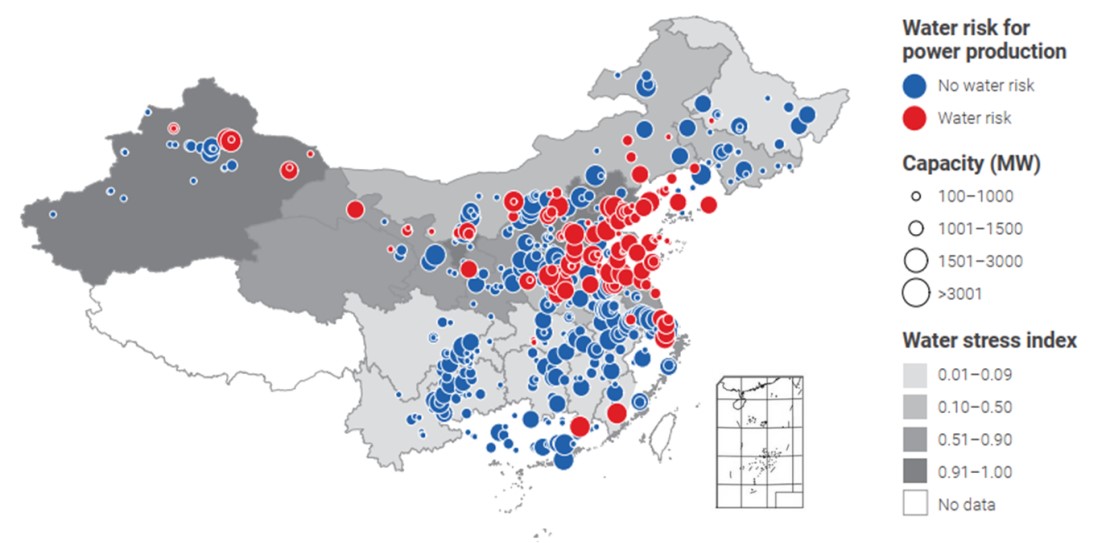
ABSTRACT
China is the largest electricity producer in the world and more than 70% of its electricity is from coal-fired power plants where water is an indispensable input, primarily for cooling purposes. Water shortages could hamper coal-fired power plants productions and result in economic losses. In this study, we simulate monthly river flows in China on a 0.5° × 0.5° spatial resolution using a calibrated physically based hydrological model, H08, that incorporates human interventions during the current (1981–2014) and future period 2050s (2035–2065) under two carbon emission scenarios Representative Concentration Pathway 2.6 and 8.5. Water demands by individual power plants are calculated based on plant-level data. We define power plants as facing low-flow water risks when the monthly 10 year return low flow is projected to be below the plant's water withdrawal requirement. We find that around 10% of China's coal-fired power capacities face low-flow water risks from July to October (the monsoon peak in the eastern Asia), and 20% the rest of the year. Particularly in the North Grid, around 35% to 60% of its regional coal-fired power capacity is at such risks from December to June. Under climate change, low-flow amounts are expected to increase in the current dry northern China except decreasing in the northwest, which is expected to alleviate the low flow water risks facing coal power plants in China except in the Northwest Inland River Basin. In the East and South Grids, if their growing electricity demands continue depending on coal, increasing utilization rate of coal power facilities can lead to heightened demand-driven water risks.
KEYWORDS
Water-Energy Nexus; Water Shortage Risks; Climate Change; Risk Assessment and Management
JCR CLASSIFICATION
Q1
Environmental Research Letters
https://doi.org/10.1088/1748-9326/abba52
